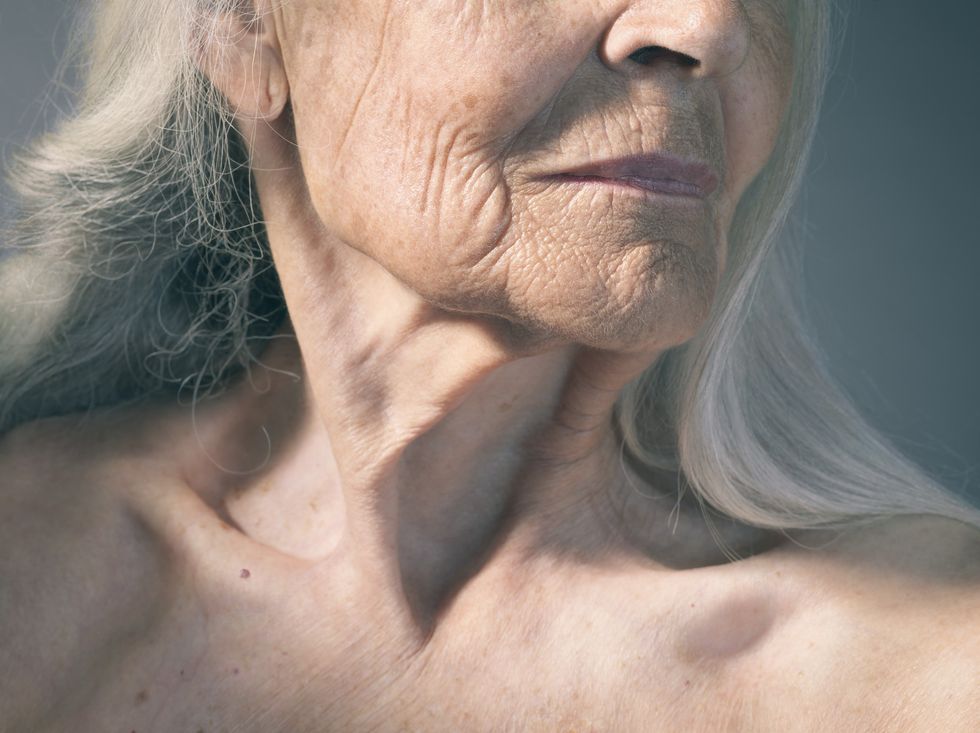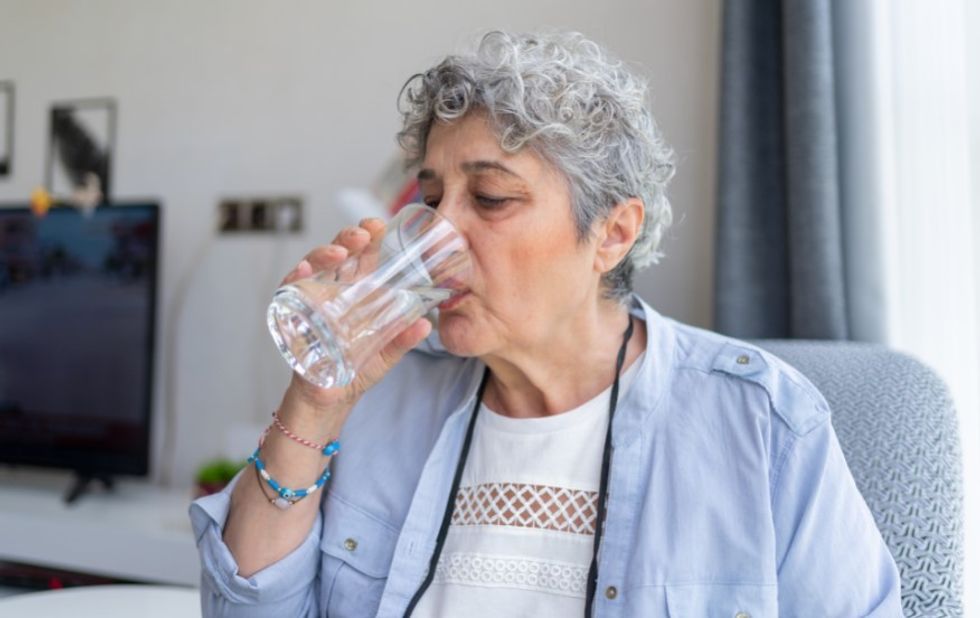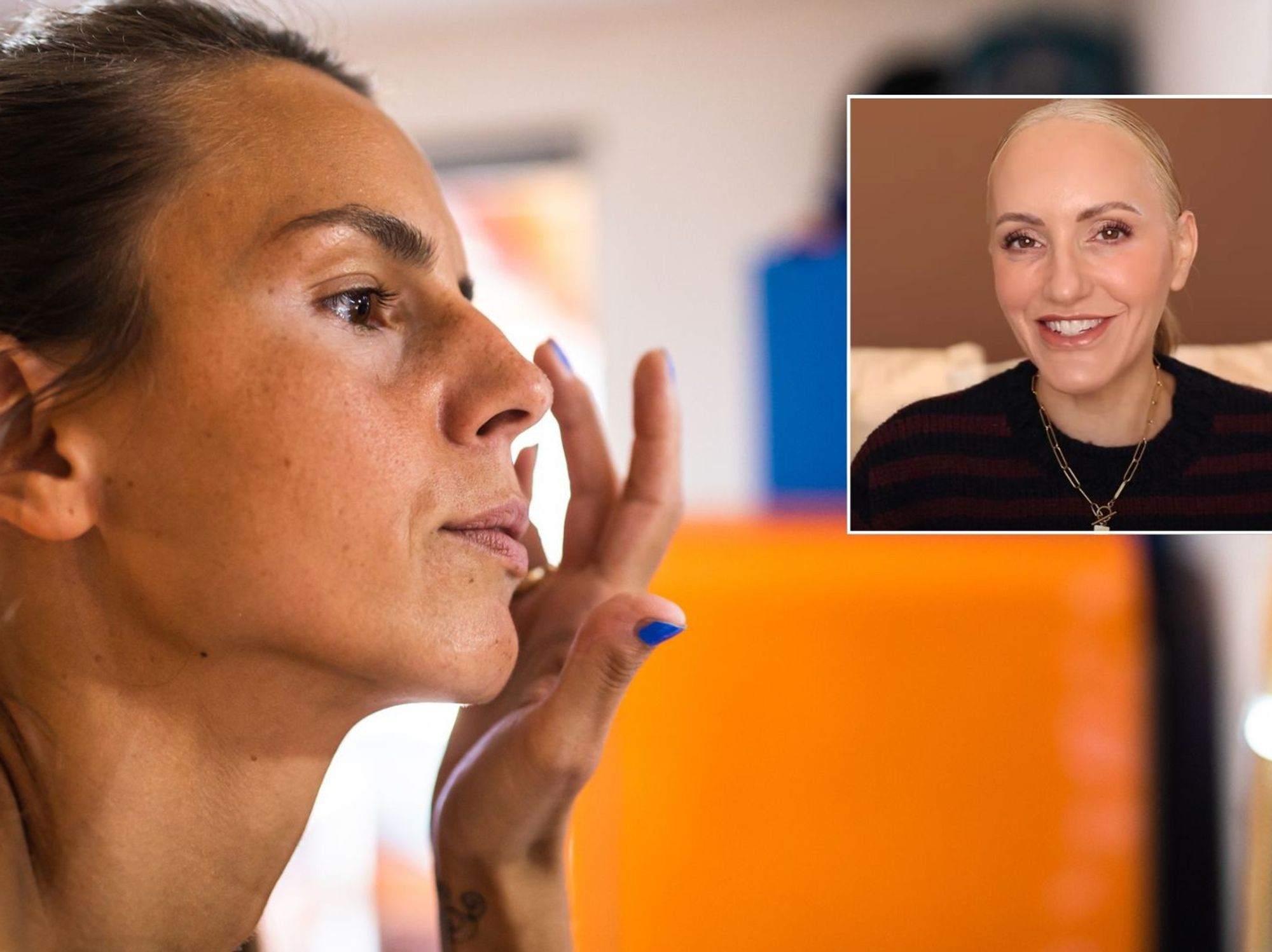Crepey skin is a common side effect of ageing
GETTY
Age and skin type can predispose individuals to several changes in the skin, but lifestyle interventions may slow the rate at which these occur. Below is a breakdown of the best preventative treatments and lifestyle measures to combat age-driven changes in the epidermis
Don't Miss
Most Read
Trending on GB News
Crepey skin, which appears thin and finely wrinkled like crepe paper, stems from a score of factors related to ageing, with sun damage and the loss of essential skin proteins being key drivers.
It primarily reflects the diminished production of collagen and elastin that help maintain the firmness and elasticity of the skin.
In many people, crepey skin usually shows up around the neck region first, as the skin on this part of the body is thinner than the face.
Additionally, the skin around the neck is constantly in motion and frequently left unprotected from external stressors like pollution and UV rays.

Crepey skin is a common side effect of ageing
GETTY
Promoting better collagen is a commonsensical solution to these changes, and scientists have helped uncover which measures enable this.
“Prolonged exposure to ultraviolet rays exacerbates this process by damaging these proteins and the deeper layers of the skin,” explained Joel Kopelman, of the Kopelman Aesthetic Surgery.
“Additionally, as the skin loses moisture and becomes dehydrated, it can take on a crepey appearance, looking thinner and more fragile.”
Drinking water and antioxidant-rich diets may tackle the root cause of these problems. Where lifestyle factors don't suffice, however, additional treatments may be called for.
Donald B.Yoo, M.D., a plastic surgeon in Beverly Hills, California, said: “The ageing process causes the skin to lose the quantity and quality of collagen and elastin, two building blocks of skin responsible for its elasticity and its hydration.
“As these become depleted the skin thins and dehydrates, leaving it more susceptible to wrinkles from facial expressions like frowning, smiling or even raising your eyebrows."
The key takeaway is that when we are young and have abundant collagen and elastin, the skin snaps back and remains smooth.
With age, however, the skin remains creased and is unable to recoil back into the unwrinkled state.
Skin care measures
The secret to strengthening the youthful characteristics of the epidermis is a good skin care regimen and preventative maintenance.
According to Doctor B. Yoo, protecting the skin from sun damage is paramount, meaning consistent sunscreen use and limiting direct sun exposure.
Many dermatologists recommend an SPF30 or greater, re-applied every two to three hours whenever exposed to the sun.
“A cleanser, moisturiser balanced for your skin type [also] play a key role," the expert added.
How to maintain skin texture
Maintaining supple skin when collagen depletes is challenging, but procedures have been developed to tackle these changes.
"Many will benefit from considering Botox or Dysport to prevent some of the wrinkles from facial expressions, like frown lines and crow’s feet - from setting too deeply in the skin," noted Yoo.
“Finally, contemporary energy-based treatments such as Potenza and Oligio X can stimulate the production of new collagen and elastin, to restore what has been lost.
“These can be combined with skin-boosting treatments such as PDRN to aid in recovering youthful skin.”
LATEST DEVELOPMENTS

Adequate hydration offers good protection against crepey skin
hydration
Top lifestyle tips
Lifestyle measures are also essential for preventing crepey skin and promoting overall skin health.
When preventing crepey skin, Kopelman stresses that maximising hydration levels in the epidermis is key.
“Staying hydrated by drinking plenty of water and eating a balanced diet rich in antioxidants, healthy fats and vitamins is vital," noted the expert.
“Avoiding smoking and excessive alcohol consumption is crucial, as both can accelerate skin ageing and deplete essential nutrients.
“Regular exercise improves blood circulation and supports skin health while managing stress through activities like meditation and yoga helps maintain a healthy complexion."
Aside from water, proteins are paramount for reducing the chances of crepey skin, as is the intake of vitamins A, C, D and E.
There is evidence that home remedies that reduce stress may also reduce the onset of skin changes for some people.
These include massaging the face, arms, and legs, doing physical exercise, and getting enough sleep.








